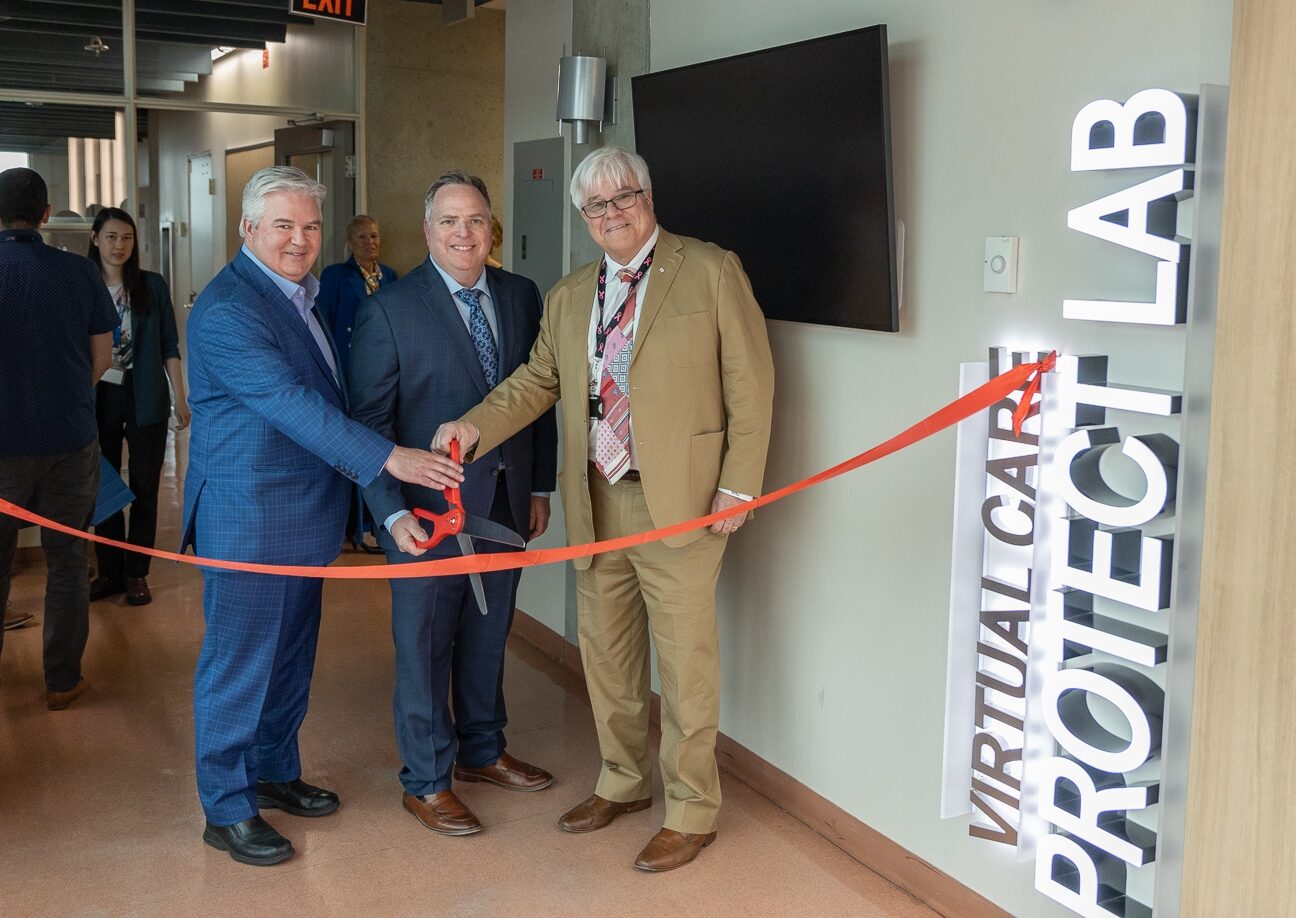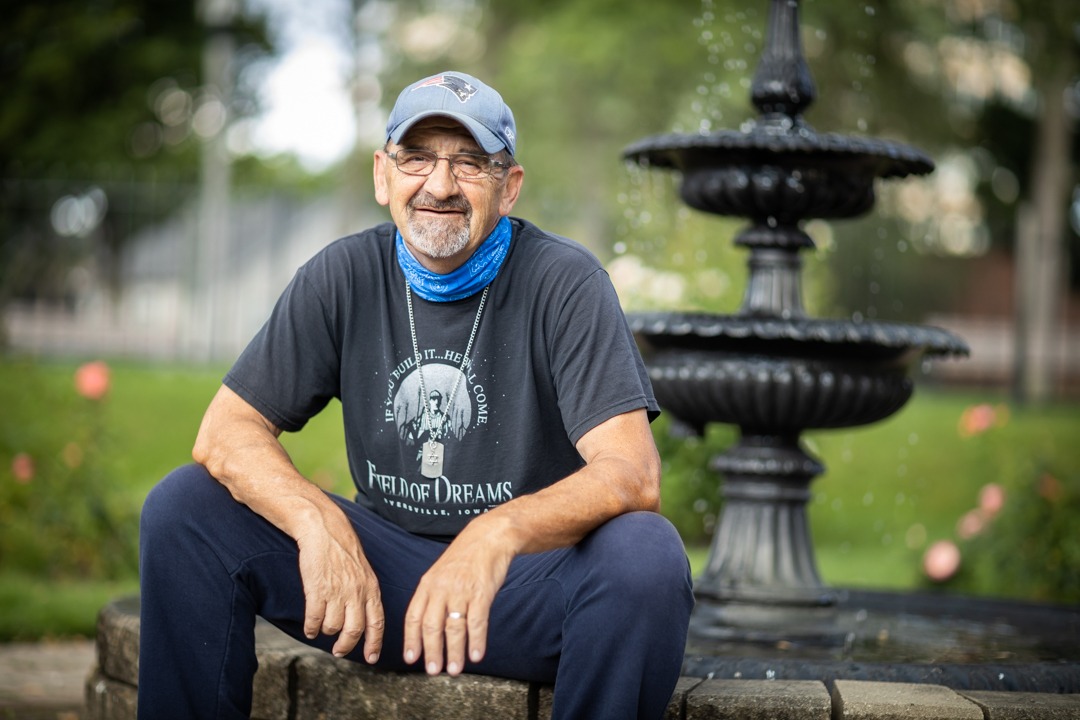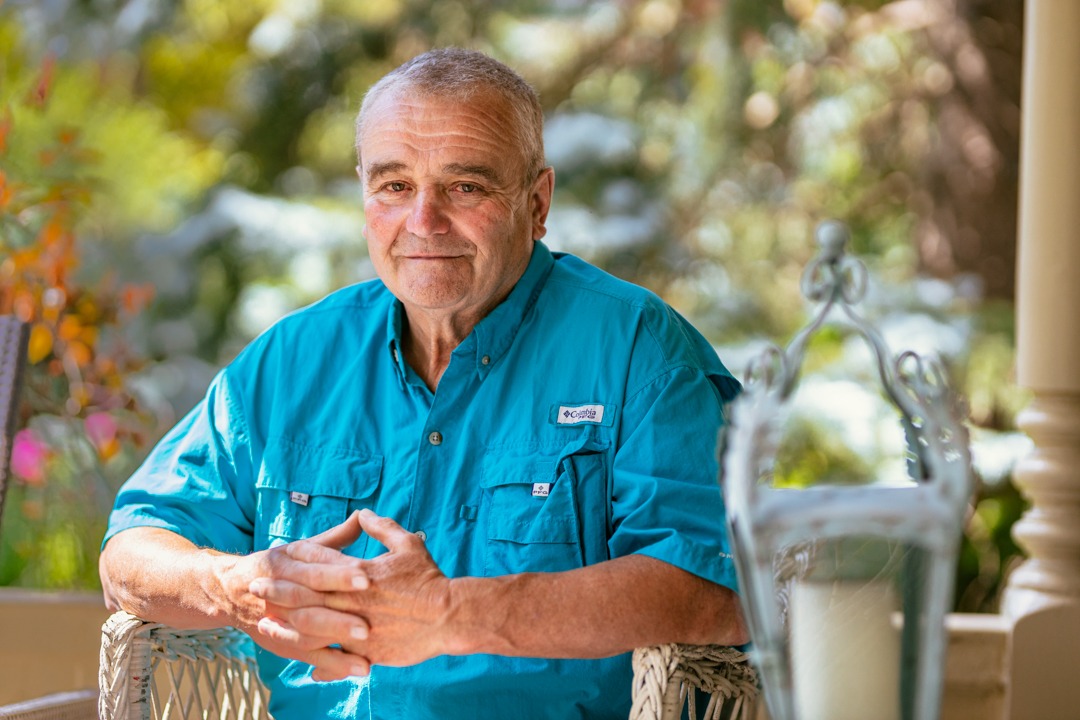
Finding a forever home at Juravinski Hospital and Cancer Centre
PROTECT Lab showcases new centre for virtual care/remote automated monitoring
A leading-edge Hamilton Health Sciences (HHS) and McMaster University research lab that studies virtual care and remote home monitoring of hospital patients now has a permanent, state-of-the-art home of its own.
“As we celebrate the opening of this remarkable facility, we eagerly anticipate the groundbreaking research and innovations that will emerge from the PROTECT Lab.” – Dr. Marc Jeschke, HHS vice president, research and chief scientific officer
The PROTECT Lab – which specializes in virtual care with remote automated monitoring (VC-RAM) for certain groups of patients as they recover at home after being discharged from hospital — celebrated its new, high-tech space at HHS Juravinski Hospital and Cancer Centre (JHCC) on June 10, with a ribbon-cutting ceremony and tour that included hospital and university leadership, community representatives and funders.

Hamilton Health Sciences donated space on the fourth floor of JHCC and principal investigators Dr. Michael McGillion, Dr. PJ Devereaux and Dr. Mark Levine were awarded $1.6 million from the Canada Foundation for Innovation (CFI)’s John R. Evans Leaders Fund and the Province of Ontario.
In-kind contributions were made by PROTECT Lab industry partners Cloud DX, Sensus, and Terence Webster Design. Dr. Ted Scott, HHS vice president of innovation and partnerships, recognized their contributions at the celebration, referring to them as the “three key industry collaborators.”
The new funding enabled bringing the existing lab, which had been divided between two other HHS sites, under one roof with upgrades to better meet the team’s technical, environmental and research needs.
“We are grateful to CFI, the Province of Ontario, McMaster, HHS and our industry partners for supporting the creation of this space — a permanent home for the PROTECT Lab that’s designed to advance our virtual care research and ultimately ensure the very best care for our patients,” says McGillion.

The PROTECT Lab, which specializes in virtual care with remote automated monitoring, celebrated its new, permanent home at HHS Juravinski Hospital and Cancer Centre.
Principal Investigators
McGillion is the assistant dean of research at McMaster University’s School of Nursing and a Population Health Research Institute (PHRI) scientist; Devereaux is an HHS cardiologist, director of the division of perioperative care at McMaster where he is a professor and senior scientist at PHRI; and Levine is a retired medical oncologist, professor emeritus in McMaster’s department of oncology, former director of the Ontario Clinical Oncology Group and Escarpment Cancer Research Institute (ECRI), and a member of the Order of Canada.
PHRI and ECRI are joint research institutes of HHS and McMaster. The PROTECT lab is part of a joint research program between McMaster, PHRI, ECRI, and the HHS Centre for Data Science and Digital Health (CREATE).
Early research
The lab’s research into virtual care and remote home monitoring started back in 2016 in patients undergoing heart surgery, but really took off in 2020 when they launched a study in response to challenges that hospitals were facing due to COVID-19. When restrictions came into place due to the pandemic, hospitals looked for ways to drastically reduce non-emergency care to minimize exposure of patients and staff to COVID. Patients were sent home earlier after surgery where possible, and many in-hospital appointments were replaced with virtual visits. These virtual care visits helped address serious complications that might otherwise have led to emergency department visits or readmissions.
How it works
Research patients use a hospital-issued tablet and remote monitoring equipment to assess blood pressure, heart rate, respiratory rate, oxygen saturation, temperature and weight. This information is sent regularly to nurses at the PROTECT Lab, and patients can also ask the nurses questions about their care through their tablet.

The PROTECT Lab features six monitoring stations staffed by nurses.
Thousands of HHS patients – most of whom were recovering from surgery — have participated in remote home monitoring studies since this type of care was introduced, and feedback has been overwhelmingly positive. As well as preferring to recover at home, research shows that patients recover better at home. There have been many examples where virtual care and remote home monitoring have helped address complications that would otherwise have meant a trip to the hospital, so this technology is also helping to reduce emergency department visits.
Designing a permanent space
Before moving to their permanent home in the JHCC, the lab’s team had been divided between HHS Hamilton General Hospital and the HHS Ron Joyce Children’s Health Centre.
The new space, which is slightly over 1,000 square feet, allows the team to be together for improved coordination; seamless, real-time communication between the patient and nurse or doctor; privacy of personal health information; real-time patient data monitoring and the ability to capture data for multiple studies simultaneously; and system information at macro (study population) and micro (individual patient) levels.
“The concept is brilliant.” Dr. Roseann O’Reilly Runte, president and CEO, Canada Foundation for Innovation
The team likens the PROTECT Lab’s design to an air traffic control centre. The space features six monitoring stations staffed by nurses, who have a clear view of a central status display grid providing real-time data on patients being monitored from home.
Work areas have acoustically-treated surfaces for noise control, so team members and patients can communicate clearly.
Other features include dedicated space where remote monitoring equipment returned by research patients can be cleaned, recharged, and repackaged for future use.
Supporting patients and new research
And the space better supports new, expanded studies. Previously the PROTECT lab has focused on post-surgery care. The plan is to begin studies in JHCC cancer patients receiving treatments such as chemotherapy, radiation, and immunotherapy as outpatients. Virtual care and remote monitoring will enhance patient support while they’re going through treatment, improving the patient and family experience.
The research team has recently launched a major study, focused on more advanced technologies. Earlier this year they received a $1.9 million grant from the Juravinski Research Institute to develop a virtual care software platform to transform support for patients by seamlessly integrating with various patient remote-monitoring devices.
“The new platform will be designed to incorporate artificial intelligence (AI) tools, enabling advanced analytics and personalized interventions, and overcoming system barriers that can slow down digital health research,” Levine says, adding, “We are grateful for this new, dedicated space at the JHCC which will allow us to continue exploring new ways to advance research and enhance patient care through virtual care with remote automated monitoring.”



